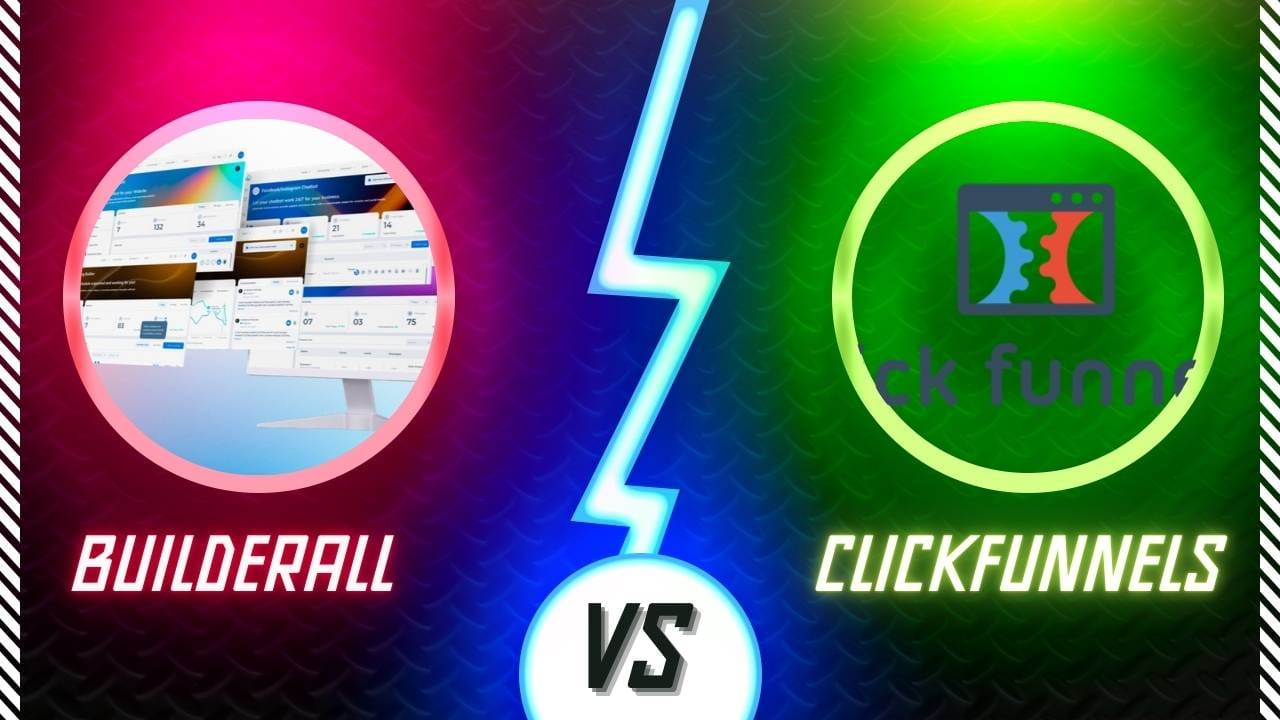10 Free Tools That Beat Paid Software
Looking for free tools that can do the job like paid? Discovering the right tools often comes with a hefty price tag—but it does not have to. There are plenty of powerful, free software options that can deliver high-quality results equal to, or even better than, their paid counterparts. In this post, we’ll explore ten outstanding free alternatives capable of streamlining your workflow, boosting creativity, and saving you money along the way.
Table of contents
- 10 Free Tools That Beat Paid Software
- GIMP vs. Adobe Photoshop
- LibreOffice vs. Microsoft Office
- DaVinci Resolve (Free Version) vs. Adobe Premiere Pro
- Blender vs. Autodesk Maya
- Inkscape vs. Adobe Illustrator
- Audacity vs. Adobe Audition
- VLC Media Player vs. Commercial Media Suites
- Mozilla Thunderbird vs. Microsoft Outlook
- Krita vs. Corel Painter
- Darktable vs. Adobe Lightroom
- Additional Factors to Consider When Choosing Free Software
- Quick Reference Comparison Table
- Real-World Applications of Free Software
- Tips for Transitioning to Free Alternatives
- Embracing the Possibilities of Free Software
- Conclusion
GIMP vs. Adobe Photoshop
Paid Equivalent: Adobe Photoshop
Free Alternative: GIMP (GNU Image Manipulation Program)
Supported Platforms: Windows, macOS, Linux
Adobe Photoshop is often the first name that comes to mind for intricate image editing and professional-grade photo manipulation. Yet, the subscription fees can be restrictive. GIMP steps in as a free, open-source solution with a broad set of tools suitable for editing photographs, creating digital artwork, and designing graphics.
Notable Features in GIMP:
- Comprehensive Image Editing Tools: GIMP supports layers, masks, color adjustments, filters, and custom brushes.
- Flexible Plugin Ecosystem: A wide range of user-created extensions and scripts can extend its functionality to suit specific workflows.
- Highly Customizable Interface: Panels, toolbars, and menus can be rearranged to create your ideal workspace.
Why Choose GIMP Over Photoshop:
- Zero Cost: Completely free, eliminating monthly or annual fees.
- Community-Driven Support: Tutorials, documentation, and community forums make it easier to overcome hurdles.
- Runs on Multiple Operating Systems: GIMP works seamlessly on Windows, macOS, and Linux.
LibreOffice vs. Microsoft Office
Paid Equivalent: Microsoft Office
Free Alternative: LibreOffice
Supported Platforms: Windows, macOS, Linux
Microsoft Office is a household name for word processing, spreadsheets, and presentations. However, its licensing model can be expensive. LibreOffice, an open-source suite, provides a free replacement with a comprehensive range of office tools: Writer (word processor), Calc (spreadsheets), and Impress (presentations), among others.
Key Features of LibreOffice:
- Full Office Productivity Set: Create documents, spreadsheets, and presentations with familiar formatting tools.
- Broad File Compatibility: Open and save documents in standard formats (ODF) and also handle Microsoft formats like DOCX and XLSX.
- Regular Updates: Frequent releases ensure new features, performance optimizations, and improved compatibility.
Why Choose LibreOffice Over Microsoft Office:
- No Licensing Fees: Install and use LibreOffice on unlimited machines without additional costs.
- Open Standards: Utilizing ODF ensures documents remain accessible across various platforms and years.
- Cross-Platform Accessibility: Works smoothly on various operating systems, including Linux distributions.
DaVinci Resolve (Free Version) vs. Adobe Premiere Pro
Paid Equivalent: Adobe Premiere Pro
Free Alternative: DaVinci Resolve (Free)
Supported Platforms: Windows, macOS, Linux
Adobe Premiere Pro dominates the video editing arena for everything from YouTube content to professional film projects. Its subscription can be challenging for smaller budgets, though. DaVinci Resolve’s free version is remarkably capable, covering nearly all editing essentials and including advanced color grading—its signature strength.
Noteworthy Features of DaVinci Resolve (Free):
- Professional Editing Tools: Cutting, trimming, and arranging video clips is intuitive, with support for multiple tracks and complex transitions.
- Integrated Color Correction and Grading: Renowned for its color grading suite, Resolve allows fine-tuning image quality with professional-level precision.
- In-Built Audio and VFX Tools: Fairlight (audio) and Fusion (VFX) functionalities ensure a complete post-production ecosystem in one package.
Why Opt for DaVinci Resolve Over Premiere Pro:
- Comprehensive Free Offering: The free edition provides an impressive toolkit that can handle advanced projects.
- All-in-One Workflow: Seamlessly integrate editing, color correction, sound mixing, and visual effects without switching software.
- Thriving User Community: Online tutorials, forums, and detailed documentation shorten the learning curve.
You Might Like: How to Choose the Right Subscription Service
Blender vs. Autodesk Maya
Paid Equivalent: Autodesk Maya
Free Alternative: Blender
Supported Platforms: Windows, macOS, Linux
Maya is well-regarded in film and game development for its robust 3D modeling, animation, and simulation tools. However, its cost is substantial. Blender, an open-source 3D suite, has risen to prominence with its versatile modeling tools, powerful rendering engines, and ever-growing feature set, offering functionality that can rival leading paid packages.
Key Blender Features:
- All-in-One 3D Suite: Includes modeling, rigging, animation, rendering, compositing, and even video editing.
- High-Quality Rendering Engines: Utilize Cycles or Eevee for photorealistic or real-time rendering.
- Extensible Through Scripting: Blender is customizable via Python, allowing artists to tailor its environment and automate tasks.
Reasons to Use Blender Instead of Maya:
- Free for Commercial Work: A production-ready toolset with zero licensing fees.
- Frequent Updates: Regular releases and a dedicated community ensure a rapidly evolving tool.
- Accessible Learning Resources: Extensive tutorials, courses, and documentation make mastering Blender more approachable.
Inkscape vs. Adobe Illustrator
Paid Equivalent: Adobe Illustrator
Free Alternative: Inkscape
Supported Platforms: Windows, macOS, Linux
Adobe Illustrator sets the standard for vector graphics, but the cost can be discouraging. Inkscape, an open-source vector editor, is a superb alternative for creating logos, icons, illustrations, and scalable designs.
Inkscape Highlights:
- Professional Vector Tools: Create and refine paths, shapes, and text objects with precision.
- SVG Focus: Uses the standard Scalable Vector Graphics format, ensuring compatibility with various other programs.
- Extensions and Filters: Enhance your workflow with add-ons that introduce new features and streamline common tasks.
Why Choose Inkscape Over Illustrator:
- No Subscription Costs: Access professional-grade vector tools at no cost.
- Lightweight Application: Inkscape performs efficiently, even on older hardware.
- Engaged Community: Find abundant tutorials, guides, and help resources contributed by other designers.
Audacity vs. Adobe Audition
Paid Equivalent: Adobe Audition
Free Alternative: Audacity
Supported Platforms: Windows, macOS, Linux
Adobe Audition is a robust tool for audio editing, mixing, and mastering. Its subscription model, though, may not fit everyone’s needs. Audacity has been a long-standing, go-to free audio editor that remains popular among podcasters, hobbyist musicians, and those just getting started with sound editing.
Key Features of Audacity:
- Multi-Track Editing: Layer multiple sound clips, apply fades, and mix tracks with ease.
- Built-In Effects and Filters: Use equalizers, compressors, noise reduction tools, and more. You can also add third-party plugins.
- Wide Format Support: Open and export WAV, MP3, OGG, and more, giving you flexibility for various projects.
Why Select Audacity Over Audition:
- Beginner-Friendly UI: Straightforward controls lower the learning barrier.
- Completely Free: No subscription means no ongoing expenses.
- Steady Improvements: Being open-source, Audacity often receives community-driven enhancements and bug fixes.
VLC Media Player vs. Commercial Media Suites
Paid Equivalents: PowerDVD, QuickTime Pro, and other premium media players
Free Alternative: VLC Media Player
Supported Platforms: Windows, macOS, Linux, Android, iOS
Paid media players and suites often claim superior codec support or enhanced playback features. Yet, VLC Media Player—a free, open-source option—handles an extensive variety of formats, discs, and streaming protocols, often surpassing what paid players can offer out of the box.
VLC’s Standout Features:
- Broad Format Compatibility: From common video files to niche codecs, VLC manages them all without additional downloads.
- Versatile Playback Controls: Adjust playback speed, apply filters, capture screenshots, and even convert files.
- Streaming and Recording: Stream content over your local network or record from external sources.
Advantages of VLC Over Paid Players:
- No Hidden Costs: Completely free with no paywalls or premium features locked behind a payline.
- Community-Driven Updates: Regular improvements ensure compatibility and security.
- Multi-Platform Consistency: Use VLC across all your devices for a seamless media experience.
Mozilla Thunderbird vs. Microsoft Outlook
Paid Equivalent: Microsoft Outlook (part of Office 365)
Free Alternative: Mozilla Thunderbird
Supported Platforms: Windows, macOS, Linux
Microsoft Outlook is a preferred choice for business email and calendar management, but some may find its license fees or bundling restrictive. Mozilla Thunderbird, a free and open-source email client, is an excellent solution that caters to multiple email accounts, customization through add-ons, and robust privacy features.
Thunderbird’s Core Features:
- Multiple Account Integration: Consolidate emails from different providers and protocols (IMAP, POP).
- Add-On Ecosystem: Extend functionality with calendars, encryption tools, and interface tweaks.
- Privacy and Security Options: Strong filtering, phishing protection, and easy integration with encryption methods.
Why Thunderbird Instead of Outlook:
- Free Without Conditions: No cost barriers or subscription models.
- Highly Customizable: Themes and extensions tailor the client to your preferences.
- Data Control: Local storage of your email and easy migration options ensure you maintain control over your data.
Krita vs. Corel Painter
Paid Equivalent: Corel Painter
Free Alternative: Krita
Supported Platforms: Windows, macOS, Linux
Corel Painter’s natural brush simulation has been admired by professionals for years, but it comes with a price. Krita, a free digital painting and illustration tool, has gained popularity for its brush engines, stroke stabilization, and layer management, making it a worthy contender.
Notable Krita Features:
- Realistic Brush Feel: Emulate watercolor, oil paints, pencils, and more with customizable brushes.
- Advanced Layer Controls: Manage complex compositions with masks, blending modes, and filters.
- Color Management: Proper ICC color profiles and HDR painting ensure accurate color representation.
Why Prefer Krita Over Corel Painter:
- Cost-Free for Professionals and Hobbyists: Achieve professional results without a license fee.
- Active Development: Continuous improvements guided by an enthusiastic community.
- User-Friendly Interface: Intuitive layout and extensive tutorials for newcomers.
Darktable vs. Adobe Lightroom
Paid Equivalent: Adobe Lightroom
Free Alternative: Darktable
Supported Platforms: Windows, macOS, Linux
Adobe Lightroom excels at managing and editing large photo collections, especially for RAW files. However, its subscription costs can be a hurdle. Darktable, a free and open-source photography workflow application, matches many of Lightroom’s core capabilities, from non-destructive editing to advanced color correction.
Key Darktable Features:
- Non-Destructive RAW Processing: Adjust exposure, contrast, and more without permanently changing your original files.
- Comprehensive Editing Modules: Use dedicated tools for noise reduction, lens correction, and highlight recovery.
- Robust Photo Management: Tag, rate, and sort images for seamless organization as your library grows.
Reasons to Pick Darktable Over Lightroom:
- No Ongoing Payments: Keep your photo editing budget at zero.
- Cross-Platform Support (Including Linux): Perfect for photographers who operate in mixed OS environments.
- Consistent Updates: Active developers and users contribute to ongoing enhancements and bug fixes.
Additional Factors to Consider When Choosing Free Software
- Learning Curve:
Transitioning to a new tool may require time. Some interfaces differ from their paid counterparts, so invest in tutorials and documentation. - Community-Based Support:
While free tools may lack official customer service lines, they often have active user forums, FAQs, guides, and user-generated video tutorials. - File Format Compatibility:
Although most free software supports standard formats, there may be minor formatting differences. Test key workflows before fully committing. - Development Pace:
Free tools vary in update frequency. Many are robust and frequently updated, but some may have slower release cycles. Research the project’s track record. - Feature Maturity:
Established free projects (like GIMP, Blender, or VLC) have matured significantly. Others may still be evolving, so ensure the software meets your immediate needs.
Also Read: How to Succeed in Digital Marketing
Quick Reference Comparison Table
| Category | Paid Tool | Free Alternative | Key Strengths |
|---|---|---|---|
| Image Editing | Adobe Photoshop | GIMP | Layer editing, robust filters, free plugins |
| Office Suite | Microsoft Office | LibreOffice | Full productivity set, no fees, open formats |
| Video Editing | Adobe Premiere Pro | DaVinci Resolve | Professional edits, color grading, free VFX |
| 3D Creation | Autodesk Maya | Blender | All-in-one 3D, free, active development |
| Vector Graphics | Adobe Illustrator | Inkscape | SVG-based design, extensible, no subscription |
| Audio Editing | Adobe Audition | Audacity | Multi-track, plugins, easy interface |
| Media Playback | PowerDVD/QuickTime Pro | VLC Media Player | Wide format support, free updates |
| Email Management | Microsoft Outlook | Thunderbird | Add-ons, multiple accounts, no fees |
| Digital Painting | Corel Painter | Krita | Natural brushes, color management |
| Photo Workflow | Adobe Lightroom | Darktable | Non-destructive RAW edits, free upgrades |
Real-World Applications of Free Software
- For Students and Educators:
Learners can practice skills using free tools, reducing financial barriers. Educators can deploy these apps on numerous machines without licensing worries. - For Small Businesses and Freelancers:
Start-ups and solo professionals can maintain professional-quality output using zero-cost software, channeling saved funds into growth or hardware. - For Hobbyists:
Casual users exploring photography, illustration, or video editing can experiment freely without feeling compelled to justify a purchase. - For Cross-Platform Users:
Users working on Windows, macOS, and Linux can enjoy consistent toolsets across different machines and operating systems.
Tips for Transitioning to Free Alternatives
- Start Small:
Begin using free tools on non-critical tasks to get accustomed to new interfaces and workflows. - Rely on Documentation and Tutorials:
Take advantage of official manuals, community guides, and step-by-step video tutorials to accelerate your learning process. - Join User Communities:
Participate in forums, Discord groups, or subreddit communities related to your chosen software. Other users’ experience can help you solve problems quickly. - Explore Extensions and Add-Ons:
Many free tools offer robust ecosystems of plugins or scripts. These can bridge feature gaps and improve your workflow efficiency. - Backup Your Work:
As you learn, keep backups of important files to safeguard against misunderstandings of new tools or unexpected compatibility issues.
Embracing the Possibilities of Free Software
Choosing free alternatives is not just a cost-saving measure; it’s also an opportunity for growth, creativity, and innovation. Free software projects often thrive on community contributions, regularly adding new capabilities and refining existing ones. Over time, these tools have matured into professional-grade applications, trusted by artists, editors, designers, and engineers worldwide.
By experimenting without a financial burden, you gain the freedom to explore multiple solutions and refine your toolkit. This flexibility empowers you to find the perfect fit for your unique workflow. If one application doesn’t click, you can pivot to another—without sinking money into trial runs.
In essence, free software breaks down barriers, fosters collaboration, and encourages continual learning. Whether your goal is to enhance productivity, hone a creative skill, or manage your digital life more effectively, free tools can help you flourish without the weight of recurring subscription fees.
Conclusion
While paid software often garners the spotlight, numerous free applications stand ready to meet professional standards. From GIMP’s versatility in image editing to DaVinci Resolve’s all-encompassing video editing capabilities, and from Blender’s full-featured 3D suite to LibreOffice’s robust productivity set, there is a wealth of no-cost options available.
These free tools excel in many environments—helping students gain experience without high costs, small businesses operate more efficiently, and hobbyists explore their interests fully. With strong communities, regular updates, and comprehensive documentation, these free software alternatives prove that excellence does not always come with a price tag.
In adopting free software, you not only keep more money in your pocket but also join a global community of users, contributors, and creators working together to push technology forward in an accessible and open manner.
About the Author:
This post was crafted by an enthusiast who appreciates both functionality and affordability in software tools. With experience spanning creative, educational, and professional domains, the author encourages readers to explore the vast landscape of free solutions and discover how they can achieve top-quality results without compromising their budgets.
You Might Like: Divi Vs Elementor













